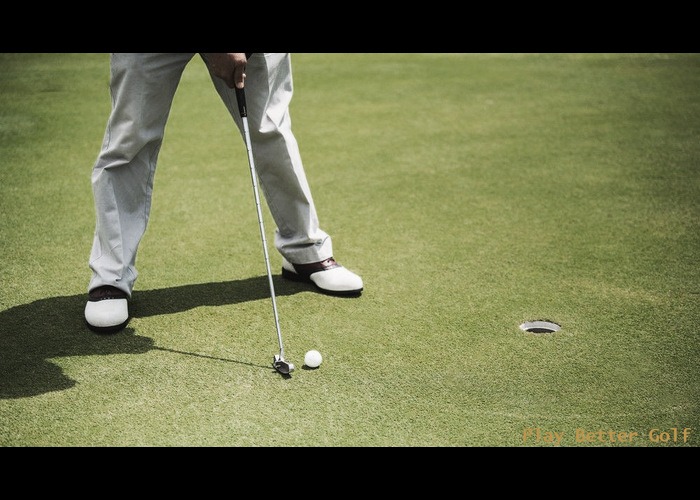
Golf club grips are the only point of contact between you and the club, making them a critical factor in your performance. A proper grip allows you to maintain control over the club throughout your swing, ensuring that the clubface stays square at impact. This, in turn, leads to more accurate and consistent shots. Moreover, the grip also influences the feel of the club, impacting your comfort and confidence during each stroke. A worn-out or ill-fitted grip can compromise your performance, leading to mishits and a lack of control.
When considering the importance of golf club grips, it’s essential to understand that every golfer has unique hand size, grip strength, and swing style. Therefore, finding the right grip that suits your individual needs is crucial for optimizing your performance on the course. DIY golf club grips offer the flexibility to customize the grip to your exact specifications, ensuring a tailored fit that enhances your comfort and control, ultimately improving your overall game.
Advantages of DIY Golf Club Grips
DIY golf club grips provide a myriad of advantages for the avid golfer. One of the most significant benefits is the ability to customize the grip to your specific preferences. Whether you prefer a softer, tackier feel or a firmer, more durable grip, DIY grips allow you to tailor the grip’s texture and thickness to suit your comfort and playing style. Additionally, DIY grips offer cost-effective alternatives to purchasing pre-made grips, allowing you to save money while still achieving high-quality results.
Furthermore, engaging in the process of DIY golf club grips can be a rewarding and enjoyable experience for golf enthusiasts. It provides an opportunity to personalize your equipment and develop a deeper understanding of the mechanics behind golf club grips. By taking on the DIY approach, you gain a sense of accomplishment and ownership over your equipment, fostering a stronger connection to your clubs and the game itself.
Types of DIY Golf Club Grips
When exploring DIY golf club grips, it’s vital to understand the various types available to cater to different preferences and playing conditions. One of the most common types is the wrap-style grip, which features a spiral wrap pattern that provides a comfortable and secure feel. These grips are popular among golfers seeking a traditional and versatile option. Additionally, paddle-style grips offer a larger flat surface, promoting a consistent hand position and minimizing wrist movement during the swing, ideal for improving control and accuracy.
For golfers looking for enhanced traction and moisture resistance, corded grips are a popular choice. These grips incorporate a cord-like material into the design, delivering exceptional grip in all weather conditions. Another popular type is the oversized grip, which provides additional comfort and stability, particularly beneficial for golfers with larger hands or those seeking to reduce excessive hand action in their swing. By understanding the different types of DIY golf club grips, you can select the option that best aligns with your playing style and preferences.
Choosing the Right Materials for DIY Grips
Selecting the appropriate materials is a critical step in creating high-quality DIY golf club grips. When embarking on this endeavor, it’s essential to consider the texture, durability, and feel of the materials to ensure optimal performance. Rubber and thermoplastic materials are commonly used for DIY grips, offering a balance of comfort and longevity. These materials provide a soft, yet resilient feel, allowing for a secure grip while withstanding the rigors of frequent use on the course.
Furthermore, synthetic materials with moisture-wicking properties are ideal for golfers who frequently play in varying weather conditions. These materials help maintain a dry and secure grip, preventing slippage and ensuring consistent performance regardless of environmental factors. Additionally, leather remains a popular choice for DIY golf club grips, providing a luxurious feel and exceptional durability. By carefully selecting the materials for your DIY grips, you can create a customized solution that enhances your playing experience and longevity of your equipment.
Step-by-Step Guide to DIY Golf Club Grips
Embarking on the journey of DIY golf club grips requires a systematic approach to ensure precision and quality. To begin, gather the necessary materials, including the grip tape, solvent, and chosen grip material. Start by removing the old grip and cleaning the shaft thoroughly to ensure a smooth surface for the new grip. Next, apply grip tape to the shaft, ensuring a secure and even layer. Then, use the solvent to activate the adhesive on the grip tape and slide the new grip onto the club, aligning it properly to achieve the desired orientation.
Once the new grip is in place, it’s essential to allow sufficient time for the adhesive to set and the grip to bond with the shaft effectively. After the grip has fully adhered, trim any excess material and ensure that the grip is securely in place. Lastly, perform a few practice swings to test the feel and comfort of the new grip, making any necessary adjustments to achieve the ideal fit. By following this step-by-step guide, you can successfully create DIY golf club grips that cater to your specific preferences and playing requirements.
Maintaining and Replacing DIY Golf Club Grips
After successfully installing DIY golf club grips, it’s crucial to prioritize their maintenance to ensure longevity and optimal performance. Regularly cleaning the grips with a mild detergent and water solution helps remove dirt, sweat, and debris that can accumulate over time, preserving the grip’s texture and tackiness. Additionally, storing your clubs in a cool, dry environment can prevent the grips from deteriorating due to excessive heat or humidity. Inspecting the grips for signs of wear and tear and replacing them as needed is essential for maintaining a consistent and reliable feel during your rounds of golf.
When it comes to replacing DIY golf club grips, it’s important to assess the condition of the grips regularly. Signs of wear, such as cracks, smooth spots, or loss of tackiness, indicate the need for replacement. By investing in high-quality materials and following proper installation techniques, you can extend the lifespan of your DIY grips. When the time comes for replacement, following the same step-by-step process for DIY grip installation ensures that your clubs are always equipped with grips that meet your exact specifications, allowing you to continue performing at your best on the course.
Expert Tips for Successful DIY Golf Club Grips
To further enhance your DIY golf club grip experience, consider implementing expert tips and techniques to achieve optimal results. Firstly, take the time to measure your hand size and grip preferences accurately before selecting the materials for your DIY grips. This ensures a precise fit that complements your playing style and comfort level. Additionally, pay attention to the alignment and orientation of the grip during installation, ensuring that it corresponds with your hand position and promotes the desired feel and control.
Moreover, consider experimenting with different grip textures and thicknesses to find the ideal combination that suits your individual preferences. Some golfers may prefer a more cushioned feel, while others may prioritize a firm and responsive grip. By exploring various options, you can discover the perfect balance that elevates your performance on the course. Lastly, seek guidance from experienced golfers or professionals who have expertise in DIY grip customization, allowing you to gain valuable insights and refine your technique for creating personalized and high-performance golf club grips.
Conclusion
DIY golf club grips offer a myriad of benefits for the avid golfer, allowing for customization, cost-effectiveness, and a deeper connection to the game. By understanding the importance, advantages, types, materials, installation process, maintenance, and expert tips associated with DIY grips, you can elevate your game to new heights while enhancing your overall golfing experience. Embrace the opportunity to personalize your equipment, tailor it to your exact preferences, and take pride in the craftsmanship behind your DIY golf club grips. With the knowledge and guidance provided in this comprehensive guide, you are well-equipped to embark on the journey of creating and maintaining DIY golf club grips that cater to your unique playing style and requirements.
If you’re ready to take your golf game to the next level with DIY golf club grips, I encourage you to embark on this rewarding endeavor and experience the transformation in your performance on the course. Elevate your game and discover the satisfaction of crafting personalized grips that enhance your comfort, control, and overall enjoyment of the game.
This comprehensive guide to DIY golf club grips offers valuable insights and techniques for golf enthusiasts looking to enhance their equipment and performance on the course. Whether you’re a seasoned golfer seeking to customize your grips or a newcomer eager to embark on this rewarding journey, the information presented here equips you with the knowledge and guidance to elevate your game to new heights. Embrace the opportunity to personalize your equipment, tailor it to your exact preferences, and take pride in the craftsmanship behind your DIY golf club grips. If you’re ready to take your golf game to the next level with DIY golf club grips, I encourage you to embark on this rewarding endeavor and experience the transformation in your performance on the course.
FAQs
1. How often should I replace my golf club grips?
- It’s recommended to replace your golf club grips every 1-2 years, or sooner if you notice signs of wear, such as loss of tackiness or visible damage.
2. Can I regrip my golf clubs myself?
- Yes, regripping your golf clubs is a common and manageable DIY task. With the right tools and materials, you can easily regrip your clubs at home.
3. What tools do I need for regripping my golf clubs?
- Essential tools include a rubber vise clamp, double-sided grip tape, grip solvent, a utility knife, and a regripping jig for accurate alignment.
4. How do I determine the right grip size for my clubs?
- Grip size is often a personal preference based on hand size and comfort. You can measure your hand size and use sizing charts provided by grip manufacturers to guide your choice.
5. Can I reuse old grip tape when regripping my golf clubs?
- It’s not recommended to reuse old grip tape, as it may have lost its adhesive properties. Using new, high-quality grip tape ensures a secure and long-lasting bond between the grip and the club.
6. What is the purpose of grip solvent, and can I use alternatives?
- Grip solvent is used to lubricate the grip tape, making it easier to slide the grip onto the shaft. While some alternatives like soapy water can be used, grip solvent is designed for this purpose and evaporates quickly, allowing the grip to set firmly.
7. How do I remove old grips from my golf clubs?
- Use a utility knife to carefully cut through the old grip lengthwise, avoiding damage to the shaft. Once cut, peel the grip away from the shaft. Clean any remaining adhesive or tape before regripping.
8. Can I install grips without a vise?
- While a vise provides stability and makes the process easier, you can install grips without one. Use a friend to help stabilize the club or lay the club on a flat surface, applying pressure to keep it steady.
9. Are there different types of golf grips, and how do I choose the right one for me?
- Yes, there are various grip materials and designs available. Consider factors such as weather conditions, personal preference for feel, and whether you prefer a standard, midsize, or oversize grip.
10. Can I mix and match different grip brands on my golf clubs?
- While it’s possible, it’s generally recommended to use the same brand and model of grips on all your clubs for consistent feel and performance. Mixing grips may result in variations in grip size, texture, and weight.




